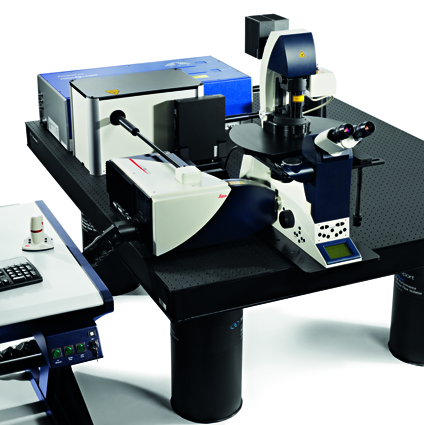TCS CARS Life Molecular Profiling
With the integration of CARS technology into the broadband confocal system Leica TCS SP5 II, Leica Microsystems expands the range of sophisticated applications in life science research and food.
The combination of visible, IR and UV lasers, SHG and CARS provides the full range of live cell imaging like analyzing of living cells, tissues and even small whole animals at high speed as well as brilliant images with high resolution.
CARS strongly supports the trends in food science and technology to analyse compound migration, lipid distribution or influence of microstructures on quality and mouthfeel of food.

